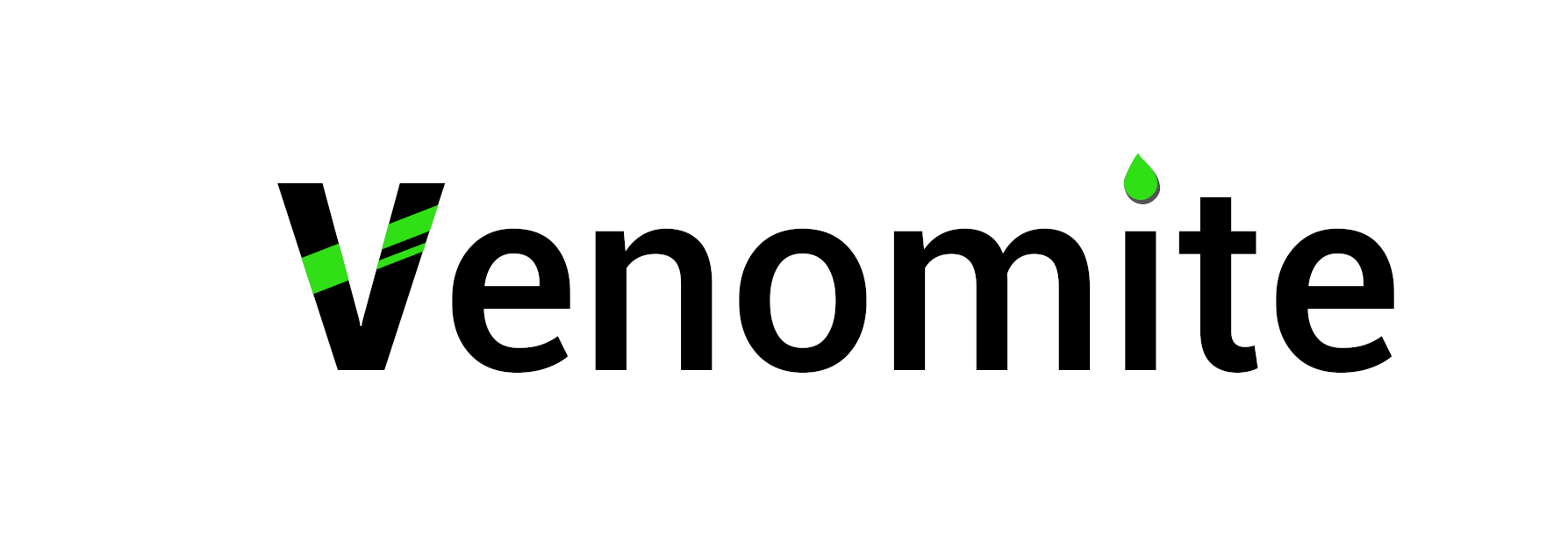This article is a bit different from my usual game development blog. It is about a struggle that every service provider and freelancer goes through. How much should I ask for doing this … without scaring away the potential business partner, while also keeping myself happy?
I have struggled with this topic quite a lot in the past. Now I finally feel confident enough to give a fair price estimate in most cases when asked. In this article, I want to give back to and help the community. I’m going to give my personal tips to help you place a fair price tag on yourself and tell you what you should always keep in mind. Throughout this article, I will be using an example from my past 3D modeling freelance experience.
I first wondered about this topic when I was 16 and started freelancing as a 3D modeler. I wanted to turn my hobby into something that paid for ice-cream and video games, so I had to set a price for my services. It was not easy because I was offering my services on Unity Forums and there were many others like me doing the same thing. Yet nobody displayed their prices publicly. All prices were discussed privately and depended on the specific 3D model requested. So at first, it was a lot of googling and guessing. Many potential clients refused because I either asked too much or they expected the price to be way lower.
What should I keep in mind?
Usually, how a client finds you is an ad, a post on a forum or through a friend. They tell you what they need (for this example a sci-fi RPG model) and want to know the cost. Usually, you can’t just spurt out a number in a couple of seconds, you have to give it a little thought.
Ask a lot of questions!
When you get into the discussion of prices with a potential client, they always have a vision in their head about the finished product. Your first task is to understand as closely as possible the vision your client has. It always helps if they have drawn something down or can sketch something up on the spot.
Most likely, you know more about your field of work than your client does, so you have to dig deep into the specifics. If the customer says “I want an AK47 model” you can’t just say “Okay, it will be $50”. With that little info, you don’t really know what they are planning to use it for. So you can’t assume if they want a high-poly model for an FPS or a low-poly model for a top-down shooter. You don’t also know if the customer expects the model to be already unwrapped and textured or they have someone else for that job.
These are all 3D modeling specific examples, but the principle stays the same. Ask a lot of questions to know what the client expects. That way you can give a good price estimate and will be motivated to work together.
There will always be people who expect an unrealistically low price!
These people are usually the ones who have no clue how much work goes into completing the task. They might ask you “What do you mean? One gun model will take a whole month? And 500 dollars? I could buy a gun cheaper and faster at Walmart!”
You have made your estimation and the client expected a price half the size or even less than that? I would say you can try to negotiate some middle ground, but usually, it is better for the both of you if they will leave to find someone else who would complete the task for them.
There is always someone who will do it cheaper!
That is not your loss! I have been convinced several times that my price was too high and so I took the job for way less than I originally planned. About halfway through the task, I realized I was working for about 2 USD per hour. For me, that is close to slavery.
Try not to fall for jobs like that! You will not like working for people who don’t pay you enough and you will after all just put out bad work if you do. You will lose motivation fast and build a bad reputation for yourself. I believe 90% of these low-paying gigs I took never ended up in my portfolio – they were just not up to par with the rest of my work.
Ask a lot of money for a task you don’t want to do!
There will be times you get offered a fairly difficult task that is unpleasant to work on. There is a possibility the potential client already asked a few of your competitors for a price estimate before and got a high one in response. You might want to consider doing the same thing.
If you have not been running really low on money for a few months and have something better to do than waste your nerves, then you might want to pass on some shitty projects.
There is a saying “Every man has a price“. For this example, I believe that is true. So if you are confronted with a task you don’t want to do, ask for this crazy huge number that would motivate you enough to finish it – no matter how big it will be.
How much money should I ask?
I’m going to use one of my old 3D models I made freelancing as an example. I was asked for a quote on a low-poly sci-fi rocket launcher. Upon further questioning, I understood that the model should actually not be low-poly and needed photo-realistic textures. The client explained to me that the model had to be a bit scary. Maybe have claws and some glowy parts to it, that made it look sci-fi.
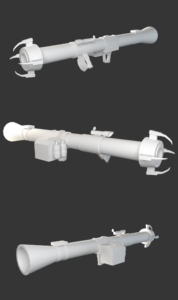
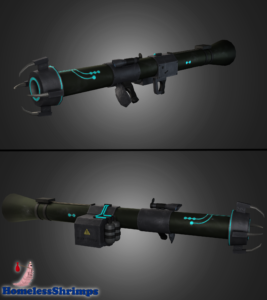
(I looked up few specific details about the finished model if some artists are interested…
1999 vertices, 1916 faces, UV unwrapped, all textures hand-painted)
How long will it take to finish?
After you have figured out exactly what the client wants, you have to think of the optimal time it will take you to finish the task.
For this requested RPG model it would take me the first day to create the model and do the unwrapping. Then the second day to texture, finish up and package the end result. As a freelancer one workday was about 10 hours, so the optimal time for finishing this model for me is 20 hours.

It will take twice as long
The golden rule is that it will almost never take the optimal time and you can’t predict every mishap along the way. So your best bet is to multiply your optimal time by 2. That way you get a much more realistic timeframe. So the realistic timeframe for the rocket launcher model is 40 hours.
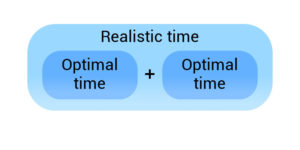
What is the average hourly rate?
Whether or not you are anything close to average, you should still take into consideration the average hourly rate of other similar (freelance) developers. A quick googling told me that according to peopleperhour.com the average asked hourly rate for a 3D modeler is somewhere around 17€ ($20) while writing this article. So to continue the formula, we are going to multiply the realistic time (hours) with the average rate. 40 * 20 = 800.
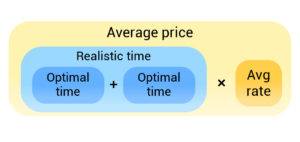
How much do you want this?
Coming back to what I mentioned before, about asking a lot of money for a crappy job. You should ask yourself how much you want to do the task offered. Place your “feeling marker” somewhere between two points on a line, where 0.5 means “I desperately want to do it”, 1.0 means “It doesn’t make a difference” and 2.0 means “I really don’t want to do it”.

Of course, the line should continue to grow endlessly to match all crappy tasks offered but you get the point. Now we can multiply the previously gotten price with the set feeling marker. Let’s say the task seems fairly average and I’m currently short on work, so I’ll multiply the previously gotten price by 0.75. That gives me 800 * 0.75 = 600.
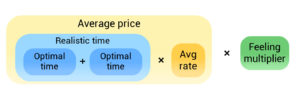
(Please note that if you have other tasks and the client wants to get the model ASAP then the feeling marker should rise higher, as you would have more stress coming along with that project.)
How effective are you?
You shouldn’t charge the average rate if you are just a beginner. The task will ultimately take longer for you and the outcome might not be that high quality. Then again, you should not charge the average price if you’ve been working in this field for over ten years and your effectiveness and quality levels are high. A good way to judge my skill-level was at that same peopleperhour.com website, comparing other people’s portfolios to mine. If I set the average hourly rate 17€ ($20) then the average quality of my work should be on par with the people who display their rates at that level.

Now you should have an overview how you compare to the rest of your competitors. Place another marker between 0.5 “I’m a beginner”, 1.0 “I’m at a medium skill level” and 2.0 “I’m an effective professional”, this time let’s call it an “effectiveness marker”. I believe to have been just above beginner at that time, so I’ll just multiply my example by 0.6. That gives me 600 * 0.6 = 360.

So that is how I find it simple and fair to set a price for most pieces of work. As for the example sci-fi RPG, I feel now, it would have been fair to ask $360 for creating it. To be fair, I do not recall how much I asked for it at that time, so I can’t give a comparison.
I hope my formula is of help to some of you starting out or even to some already deep in their business. I would love to hear if my described method works for you or if you think I am totally in the wrong with this one. Leave your thoughts in comments below.
